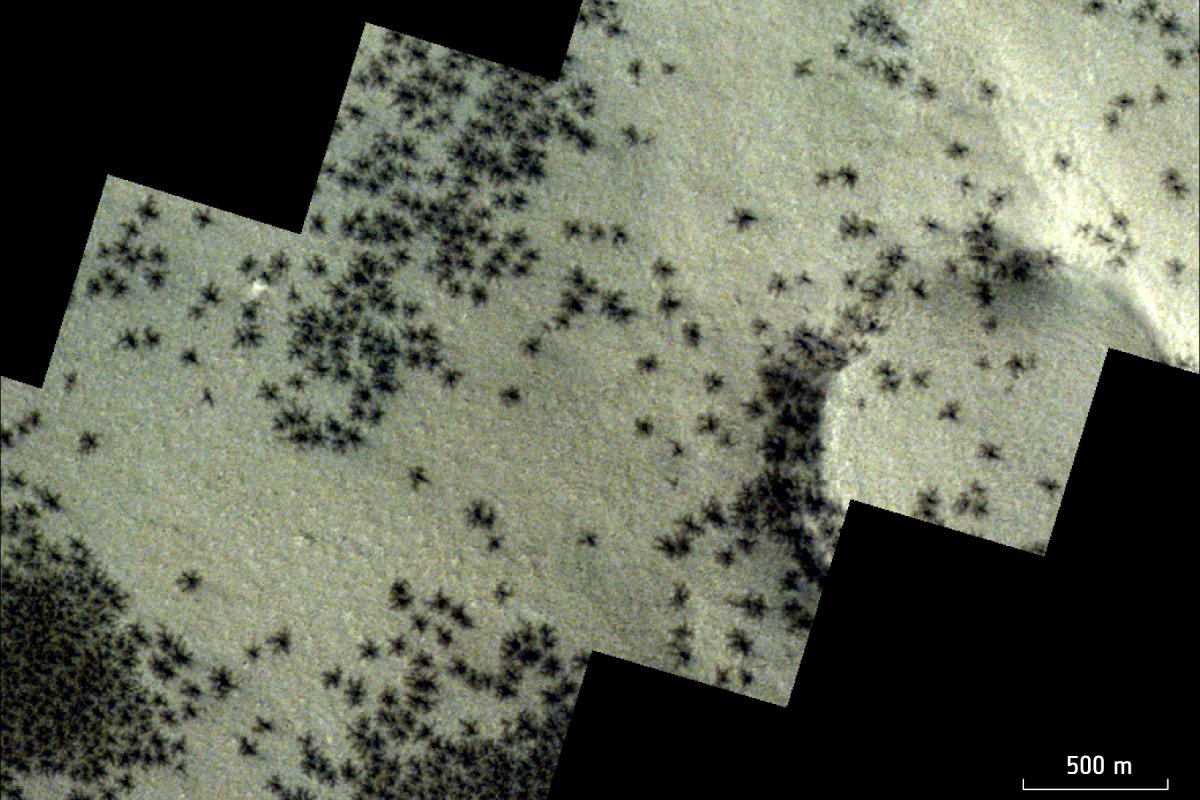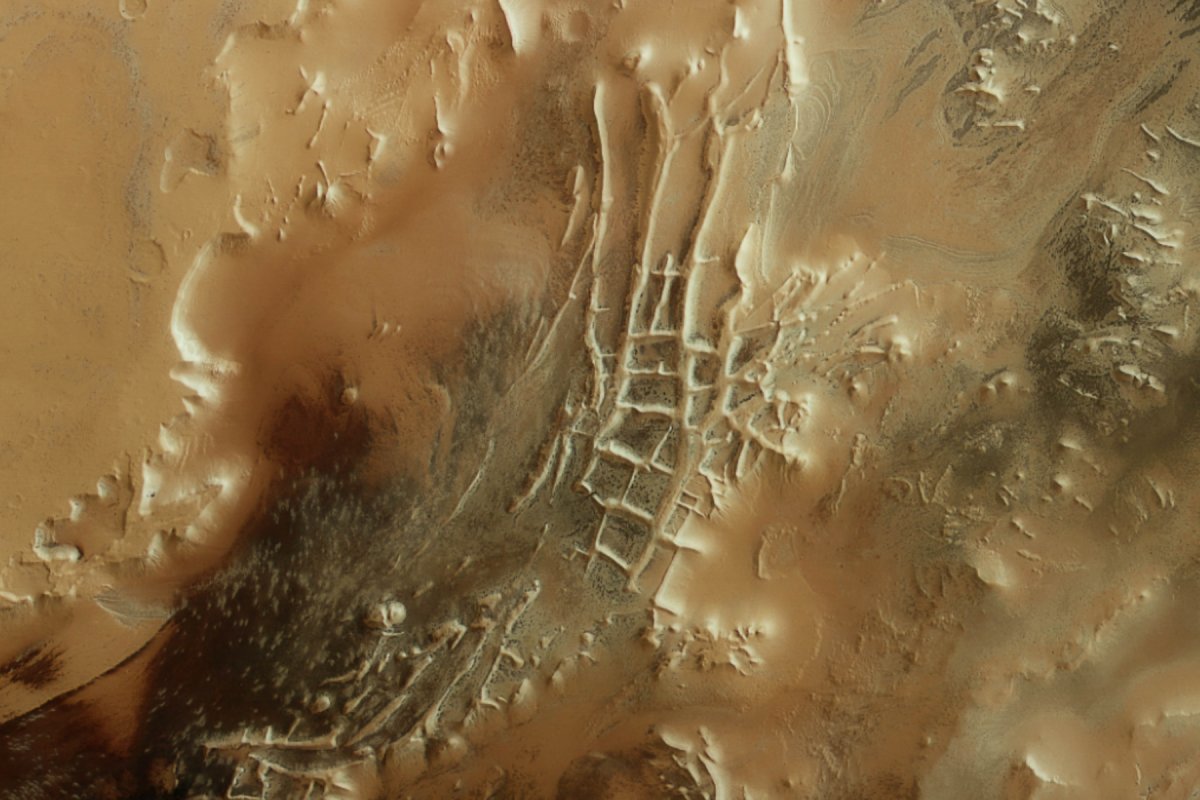In something straight out of an episode of Doctor Who, a Mars orbiter has spotted what appears to be a swarm of spiders crawling across the red planet's surface.
These "spiders" were recently captured on camera by the European Space Agency's (ESA) Mars Express spacecraft near a surface formation known as the Inca City, and the pictures are enough to make any arachnophobe's skin crawl.
Of course, these aren't actually spiders. They are small dark features that form on Mars' surface as a result of gas busting through a layer of carbon dioxide ice.

Another Mars orbiter, ESA's ExoMars Trace Gas Orbiter, captured the arachnoid scars even more clearly in 2020, revealing the secrets of the strange formations.
These "spiders" are thought to be caused by the sun heating up layers of frozen carbon dioxide on Mars' surface. The planet's south pole, where these spiders were spotted, can see temperatures drop as low as –243 degrees Fahrenheit, freezing CO₂ in the air into solid ice.
The sun's heat causes the carbon dioxide ice at the bottom of the layer to turn into gas, which builds up like a shaken can of soda, bursting through the top layers of icy CO₂. As the gas explodes outward, it brings with it dark materials from the ground, which are scattered between 150 feet and 0.6 miles around the starburst shape of the cracked ice. From orbit, these strange formations look a little bit like spiders.
In the new Mars Express image, these "spiders" are seen scattered across the planet's hills as well as near a formation known as the Inca City, which was named for its gridlike network of ridges that resemble the ruins of Incan towns. This formation, also known as Angustus Labyrinthus, was first spotted in 1972 by NASA's Mariner 9 probe.

Scientists still don't really understand how Inca City formed. Different theories suggest it could have resulted from sand dunes slowly turning into stone over time or magma leaking through fractures in the planet's surface.
Another theory is that Inca City might sit within a crater from an ancient impact, with the collision having caused faults to form across the nearby region. Lava leaking through these faults may have then formed the walls of the Inca City formation.
These spiders aren't the only bizarre-looking formation on Mars' surface. A strange spoon-shaped rock was snapped by Mars' Curiosity rover in 2015, while a freaky face-like feature was photographed in 1976 by the American Viking 1 orbiter and lander.
Do you have a tip on a science story that Newsweek should be covering? Do you have a question about Mars? Let us know via science@newsweek.com.
Uncommon Knowledge
Newsweek is committed to challenging conventional wisdom and finding connections in the search for common ground.
Newsweek is committed to challenging conventional wisdom and finding connections in the search for common ground.
About the writer
Jess Thomson is a Newsweek Science Reporter based in London UK. Her focus is reporting on science, technology and healthcare. ... Read more
To read how Newsweek uses AI as a newsroom tool, Click here.








